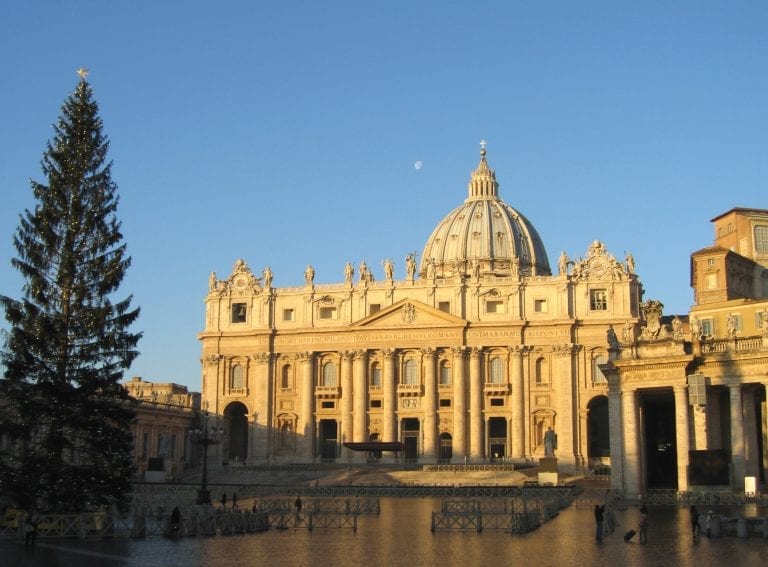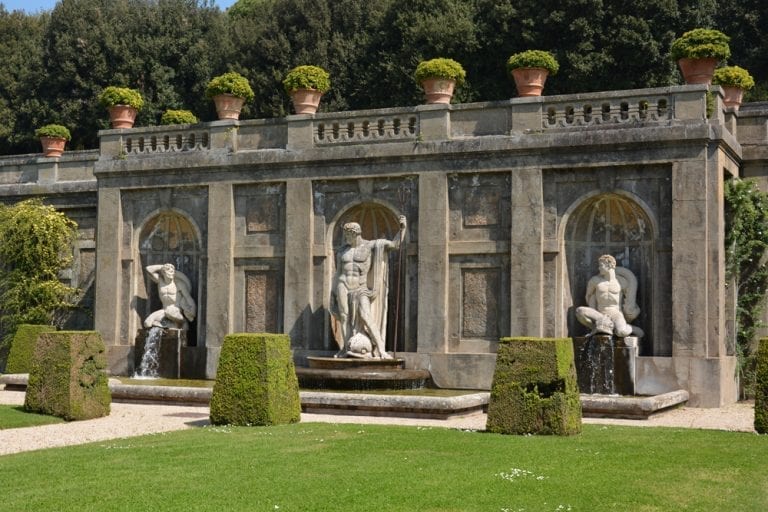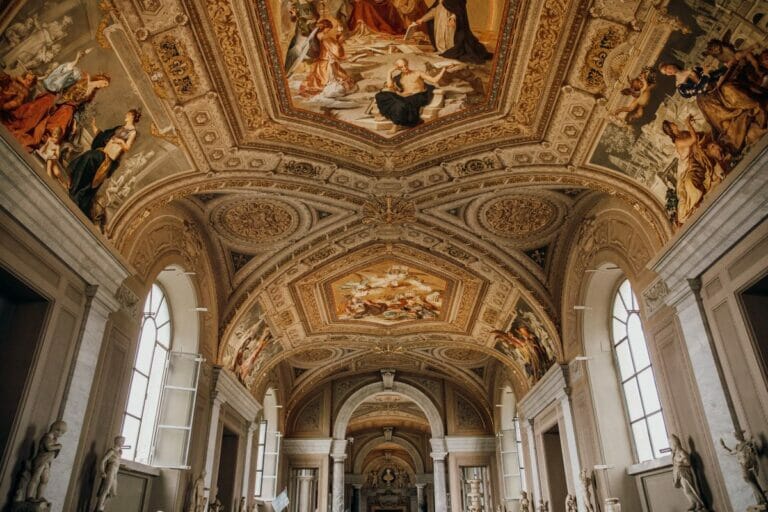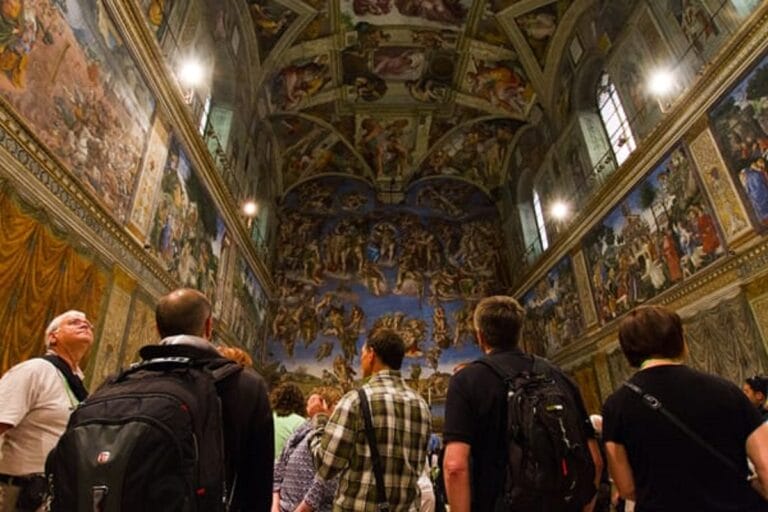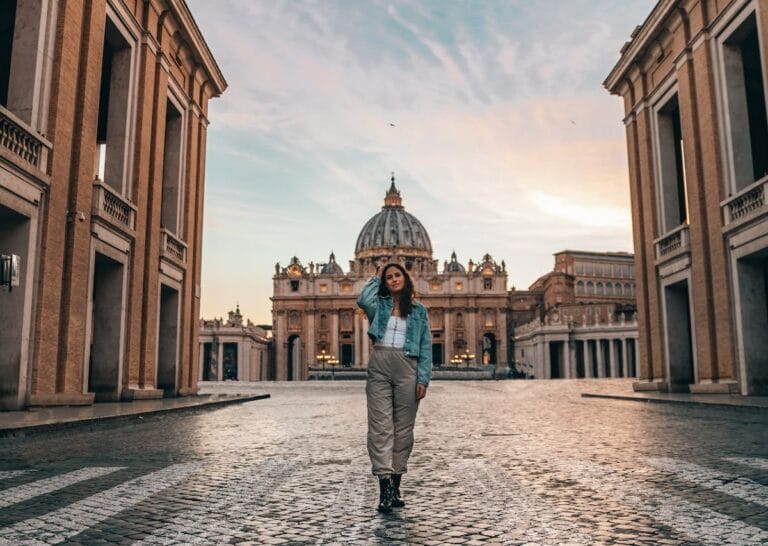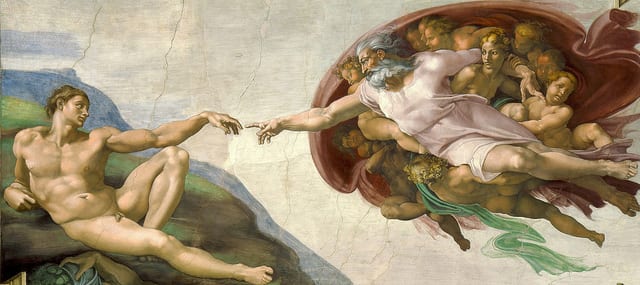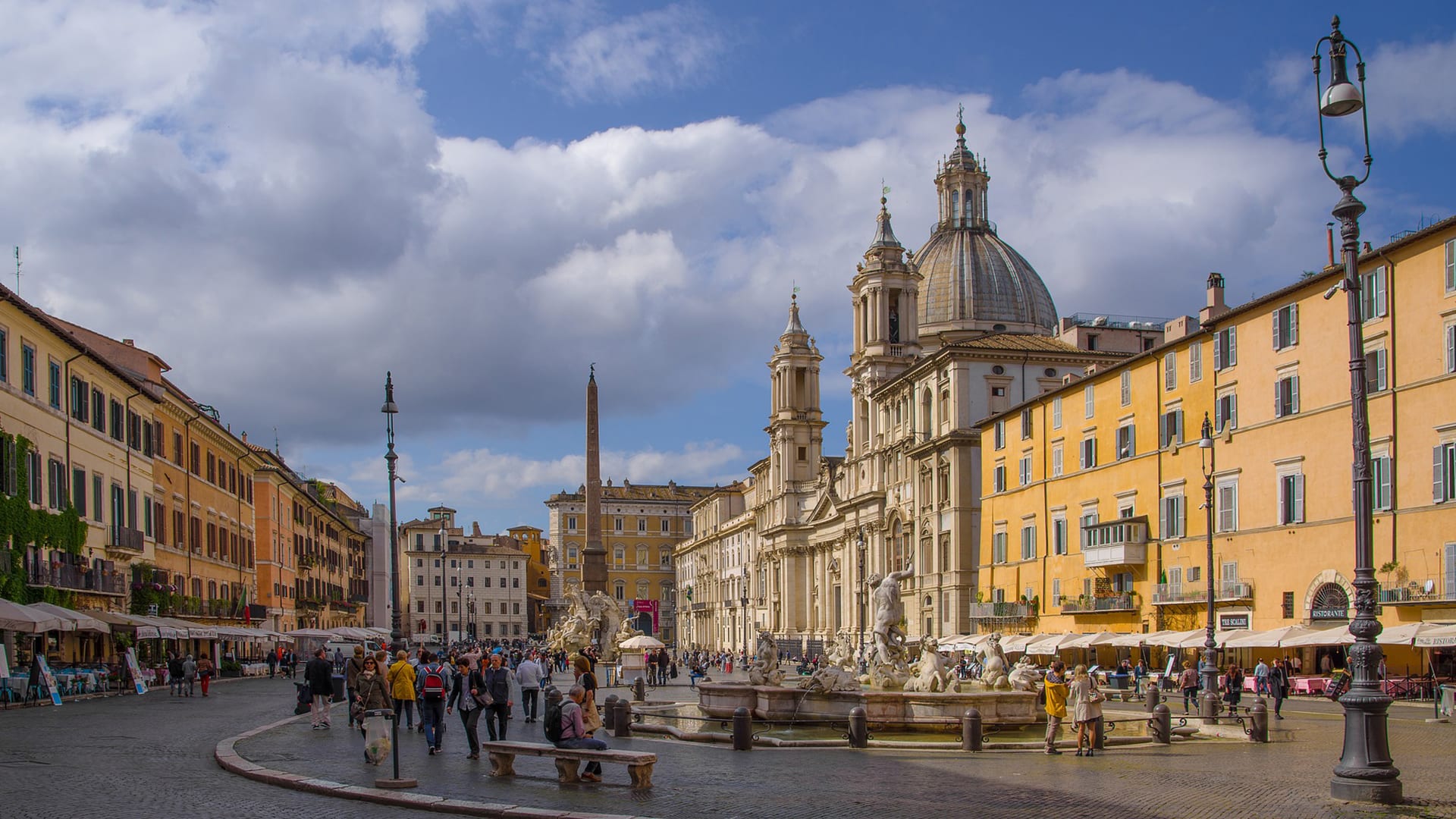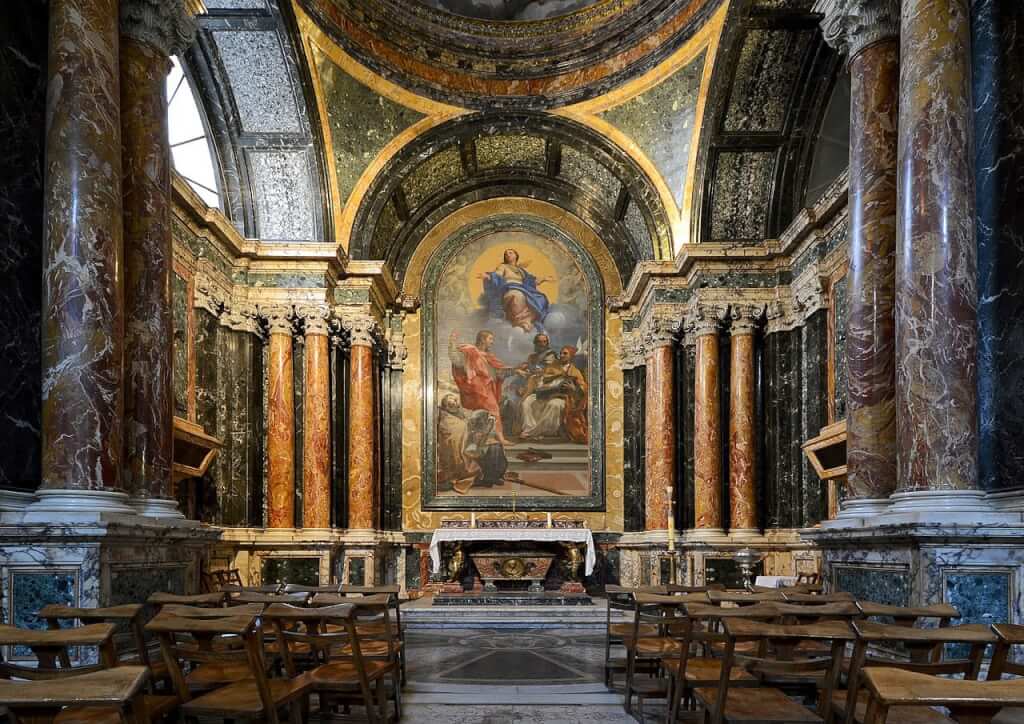
10 Must-See Churches in Rome: St Clement’s Basilica, Santa Maria in Trastevere & More
February 4, 2025
St. Peter’s Basilica is one of the most impressive churches in Rome, and indded in the world. It’s easy for travelers to forget that Rome has over 900 churches, and many of them are frankly, incredible.
If you just want to pop into St. Peter’s we fully understand – read our insiders’ guide to St. Peter’s for the best visiting tips – but if you want to branch out just a little more there is a staggering collection of beauty and religious significance awaiting you.
Here’s a short list of our picks for the best churches in Rome to visit on a pilgrimage to Rome or if you are just visiting and love amazing architecture and beautiful art.
The Basilica di Santa Maria Maggiore
As the largest of the churches in Rome dedicated to the Virgin Mary, St. Mary Major is one of the city’s most important. Filled with artefacts and art, every inch of the church seems to be a part of religious history.
Though its beautiful 18th-century façade appears Baroque, it’s actually one of the oldest churches in Rome, built around 440.
Some of the best examples of the church’s long history are the 5th-century mosaics on the triumphal arch above the main altar along with those on the nave walls, which depict 36 scenes from the Old Testament.
Since it hasn’t been remodelled or rebuilt like Rome’s other major basilicas, Santa Maria Maggiore is one of the Rome’s best examples of an Early Christian basilica. Today, it’s considered one of the best churches in Rome for anyone considering a pilgrimage from around the world.
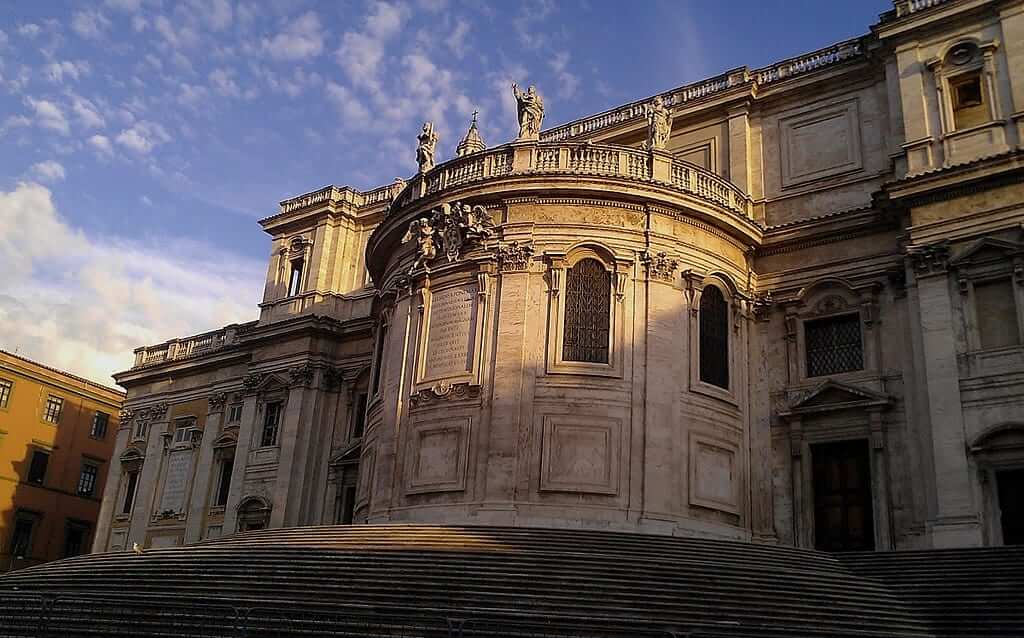
The external façade of the apse on the north-west of the church on Piazza dell’Esquilino
Each year on August 5th, thousands of white petals fall from the ceiling during the Basilica’s Miracle of the Snows celebration, an event commemorating the legend of a miraculous summer snowfall.
San Lorenzo Fuori le Mura
Okay, this isn’t exactly considered one of the churches in Rome: Constantine built the St. Lawrence Outside of the Walls Basilica, just outside of Rome over the tomb of St. Lawrence, a martyr and one of the first deacons of Rome. Today it remains a shrine to the saint, as well as St. Stephen and St. Justin.
The church dates back to the 6th century, and the triumphal arch still shows Byzantine mosaics from that era depicting Christ with the saints. 13th-century frescoes decorate the exterior and opposite the tomb of St. Lawrence is the “stone of St. Lawrence,” a marble slab with a large stain where the saint’s body was laid after his execution.
The Basilica has been funded by nearly every Pope since its construction, changing the small shrine into one of the largest religious complexes just outside the walls of Rome. It remains an important place of worship and site for Rome pilgrimages.
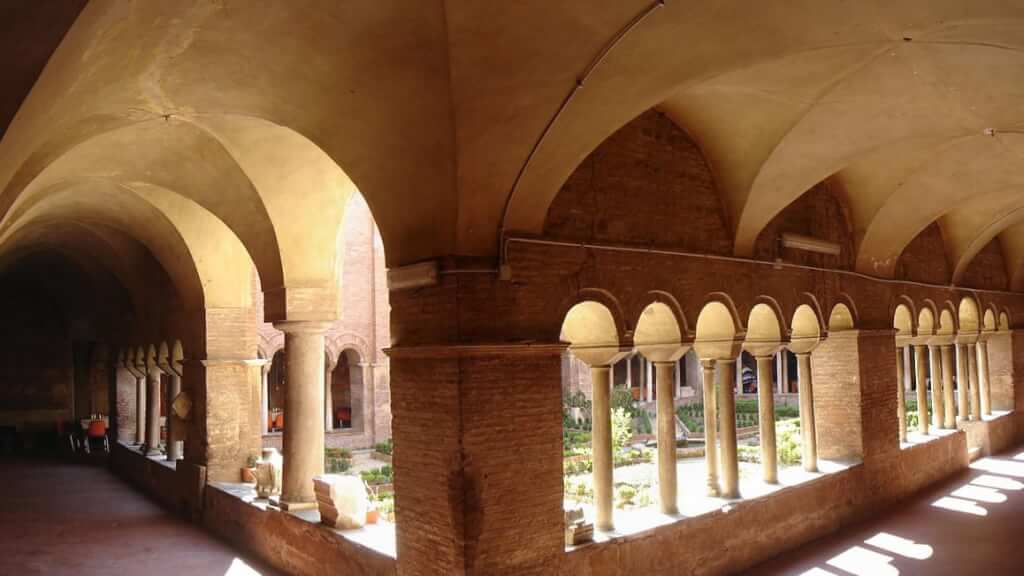
Inside the cloister
San Giovanni in Laterano
St. John Lateran is actually the official cathedral of Rome (not St. Peter’s!) and is the seat of the bishop of Rome – a.k.a. the Pope. One of the four major basilicas in Rome, the cathedral was built in the 4th century AD and is believed to be one the first Catholic churches in Rome.
Unfortunately, fires, vandals and earthquakes over the years mean little remains of the original church. It now has a more Baroque style with 16th- and 17th-century restorations.
Though the façade isn’t the most impressive, the inside more than makes up for that. Frescoes, columns, mosaics and sculptures decorate nearly every inch of the ornate Roman church.
The must-see sites for Roman pilgrims are the column fresco by Giotto, the altar’s rich 1367 Gothic tabernacle – holding what the faithful believe are the heads of Saints Peter and Paul, and the Baptistery built by Emperor Constantine in AD 315.
Today it’s one of the oldest surviving Christian structures in Rome, and another one of the main Roman pilgrimage churches.
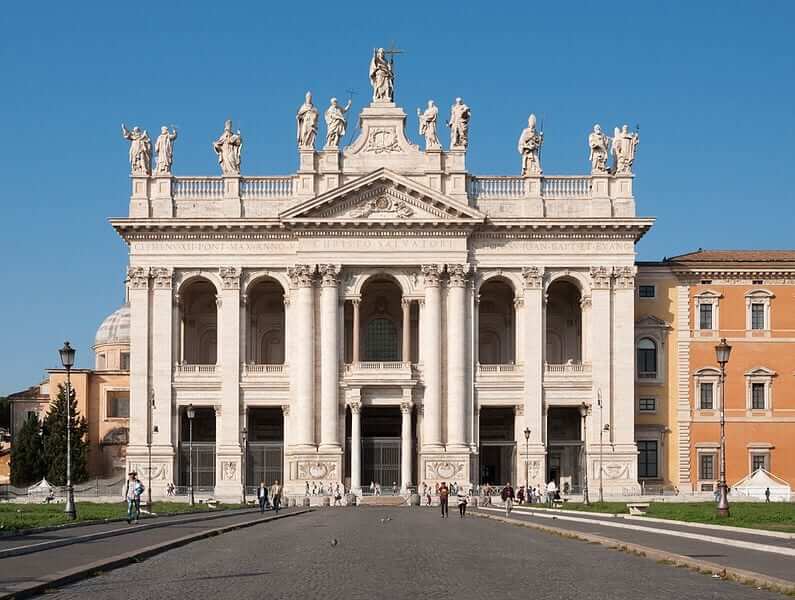
The oldest public church in the city of Rome and the oldest basilica of the Western world.
Santa Maria in Trastevere
No list of jaw-dropping churches in Rome is complete without Santa Maria in Trastevere. Not only is it one of the oldest churches in Rome, supposedly built around 350 AD, it is also one of the most impressive.
This 4th-century church was likely the first church in Rome where Mass was openly celebrated and is also said to be Rome’s first church dedicated to the Virgin Mary. It was rebuilt by Pope Innocent II, native of Trastevere, in the 12th century and today it boasts impressive mosaics from the 12th and 13th centuries.
Two rows of 22 large columns lead up to the nave, most of which were repurposed (or stolen) from ancient Roman temples or baths, and the altar is covered in gilded mosaics. Don’t forget to look up to admire Domenichino’s gilded ceiling, completed in 1617. If you’re a lover of mosaics, don’t miss our list of where to see the best Byzantine mosaics in Italy.
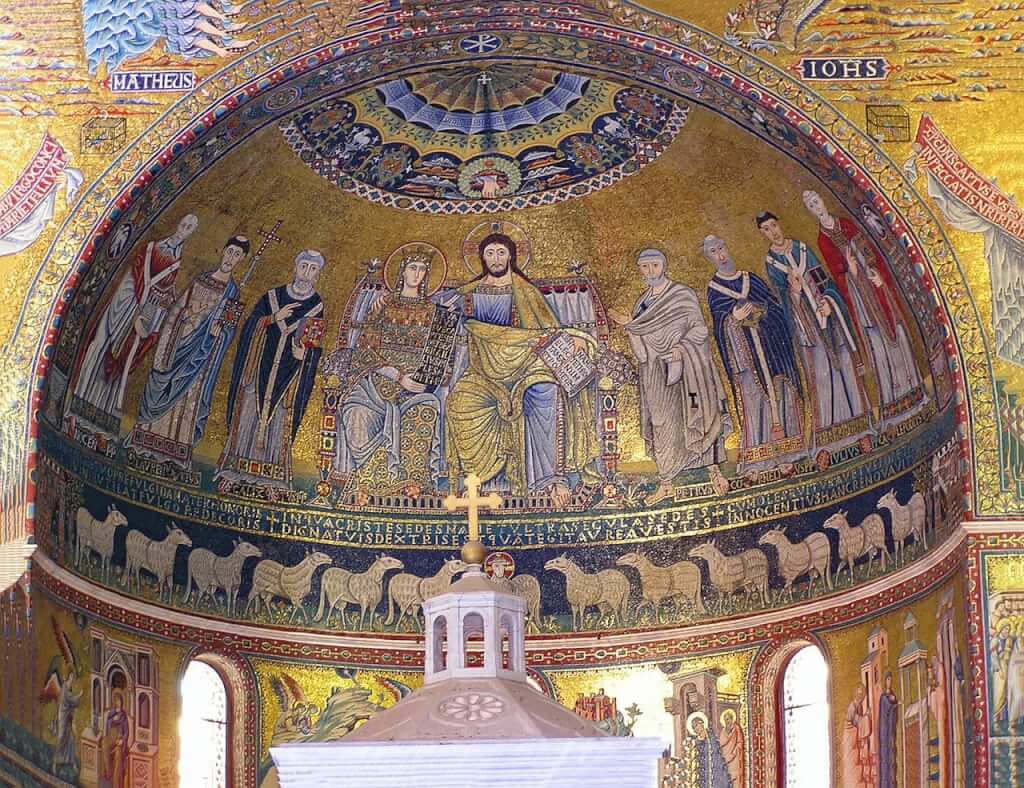
Behind the altar, Basilica of Santa Maria
Santa Maria Sopra Minerva
Santa Maria Sopra Minerva gained its name from the site it was built upon – over (sopra) the ruins of a temple for Minerva, the ancient goddess of wisdom. Actually, the present-day Basilica sits over the ruins of three ancient Roman temples: one for the Roman goddess Minerva, one for the Egyptian goddess Isis and one for the Greco-Egyptian god Serapis, according to the Basilica’s website.
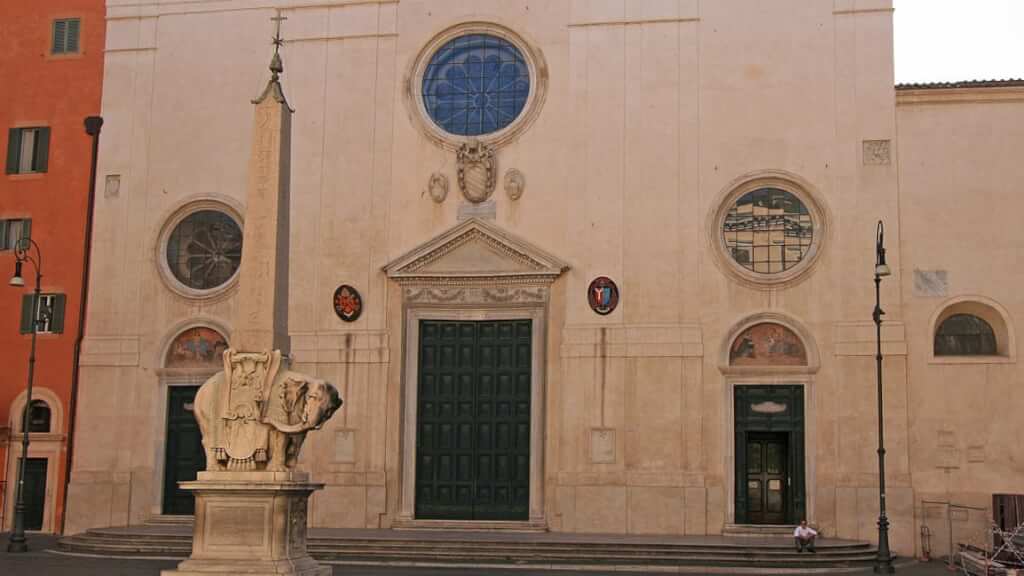
Santa Maria sopra Minerva is the first, and possibly the only, Gothic church existing in Rome.
But the location isn’t what makes it one of the best churches in Rome for pilgrims, it’s the architecture. Built by the Dominicans in the 13th century, it is one of Rome’s few Gothic (as opposed to Baroque-style) churches, and one of the most impressive Gothic churches in Italy, along with the Milan Duomo.
Enjoy the deepest blue vaulted ceilings or illuminate the Cappella Carafa, where Filippino Lippi’s frescoes are located among other 15th-century frescoes.
You can also see a sculpture by Michelangelo and the tomb of St. Catherine of Siena, Italy’s primary patron saint.
Basilica of Santa Maria del Popolo
Travelers to Rome might overlook this inconspicuous church in the large Piazza del Popolo, but the inside is a treasure trove for art lovers. The church has seven chapels, each of which contain some of the best examples of works by Renaissance artists, including Pinturicchio, Raphael, Bernini and Caravaggio.

The Altar, Basilica of Santa Maria del Popolo
Legend has it that the church was built in 1099 to dispel residents’ beliefs that the ghost of Emperor Nero was haunting the area.
The Basilica of San Clemente
St. Clement’s Basilica is located just a few blocks away from the Colosseum and named after St. Clement, Catholicism’s third pope. It’s real draw, however, is archeological.
The 12th-century Basilica is built on top of a 4th century church, which in turn was built on top of a 1st century pagan temple – all three of which you can visit today.
It’s history directly shows that Rome was built layer after layer: the difference between the 1st century ground level and today’s ground level is nearly 60 feet!
Check out the church’s fabulous frescoes and mosaics on the top floor, such as the glittering 12th-century mosaic in the apse showing Jesus on a cross that turns into a living tree.
Then head below to tour the mithraeum, a shrine dedicated to the god Mithras, whose cult came from Persia to Rome in the 2nd and 3rd centuries before it was stamped out by Roman christians. Today it’s one of Rome’s greatest hidden underground sites.
If you’d like an expert guided tour of underground sites, take walks to explore the incredible crypts and catacombs in Rome.
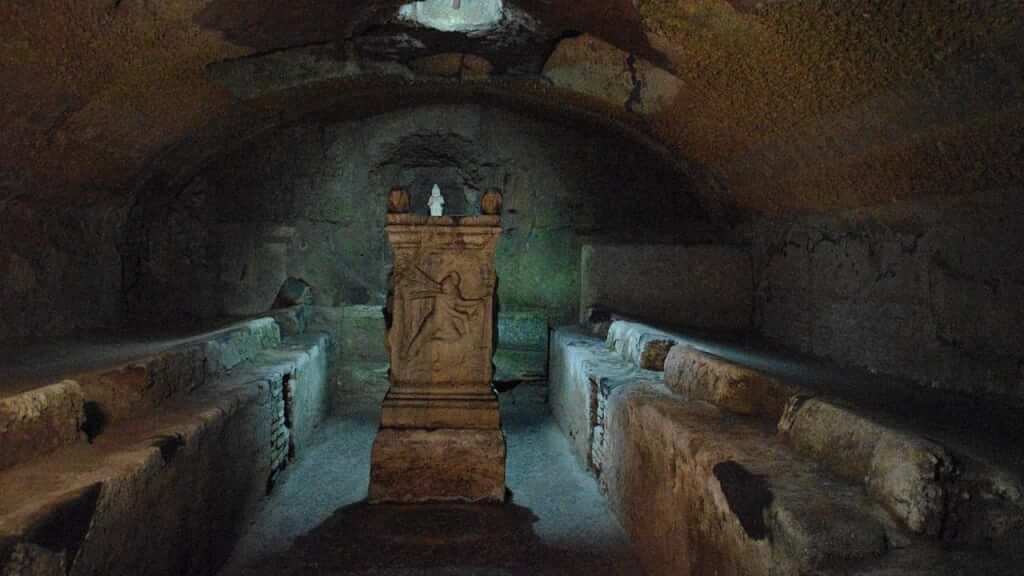
Mithraeum, the Basilica of San Clemente
Santa Cecilia in Trastevere
St. Cecilia in Trastevere is a 9th century church built over the 200 AD home of St. Cecilia before she was martyred. Below the main altar is a sculpture by Stefano Maderno of the saint’s body as he saw it in the 16th century after she was exhumed.
It’s said that her body looked as fresh as the day she was buried. The entrance to the church is slightly hidden by a façade and a beautiful Roman courtyard.
A 9th-century mosaic as well as a remarkable 13th century fresco titled Last Judgement by Pietro Cavallini, a forerunner of Giotto, decorate the inside.
The fresco can be viewed only during limited hours and for a small admission fee – but it’s definitely worth it, especially for anyone on a Roman pilgrimage.
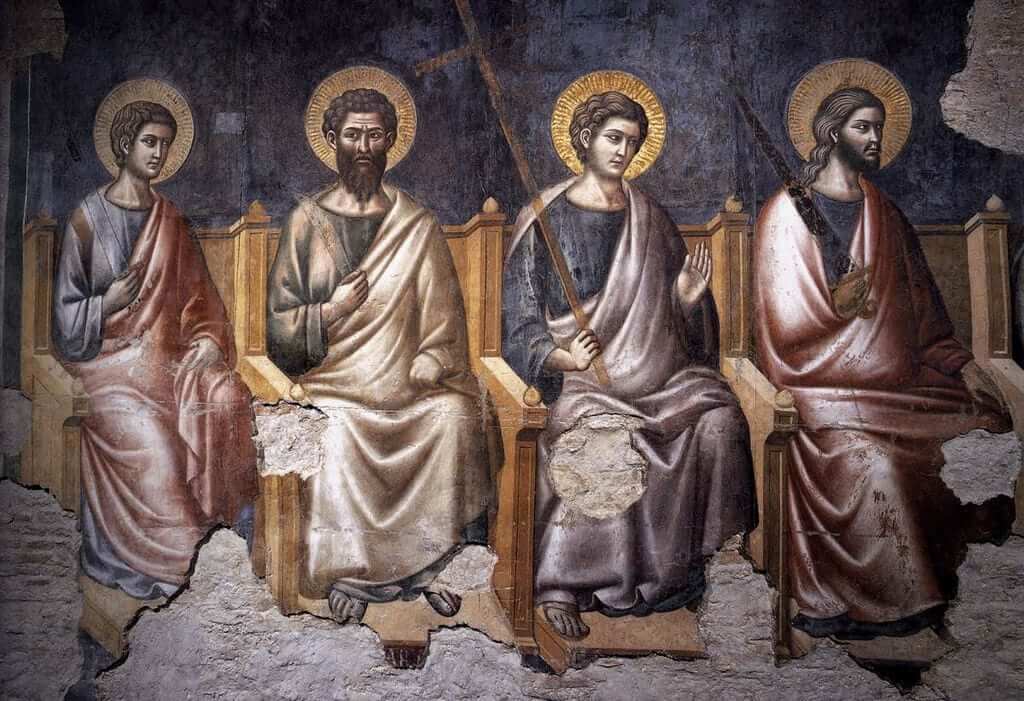
The Last Judgement by Pietro Cavallini
Basilica di Sant’Agostino
A Roman Renaissance church, St. Augustine is filled with famous artwork that makes it one of the best of the lesser-known (among travelers) churches in Rome.
Most notable is Caravaggio’s Madonna of the Pilgrims, a scandalous painting at its time for the realistic kneeling pilgrim with dirty feet and a seemingly disrespectful image of the Madonna standing with bare feet with a less-than-regal posture.
There is also Raphael’s Isaiah, said to be inspired by Michelangelo’s work in the Sistine Chapel; Sansovino’s sculpture, St. Anne and the Madonna with Child, and the Madonna and Child by Jacopo Tatti, a student of Sansovino.
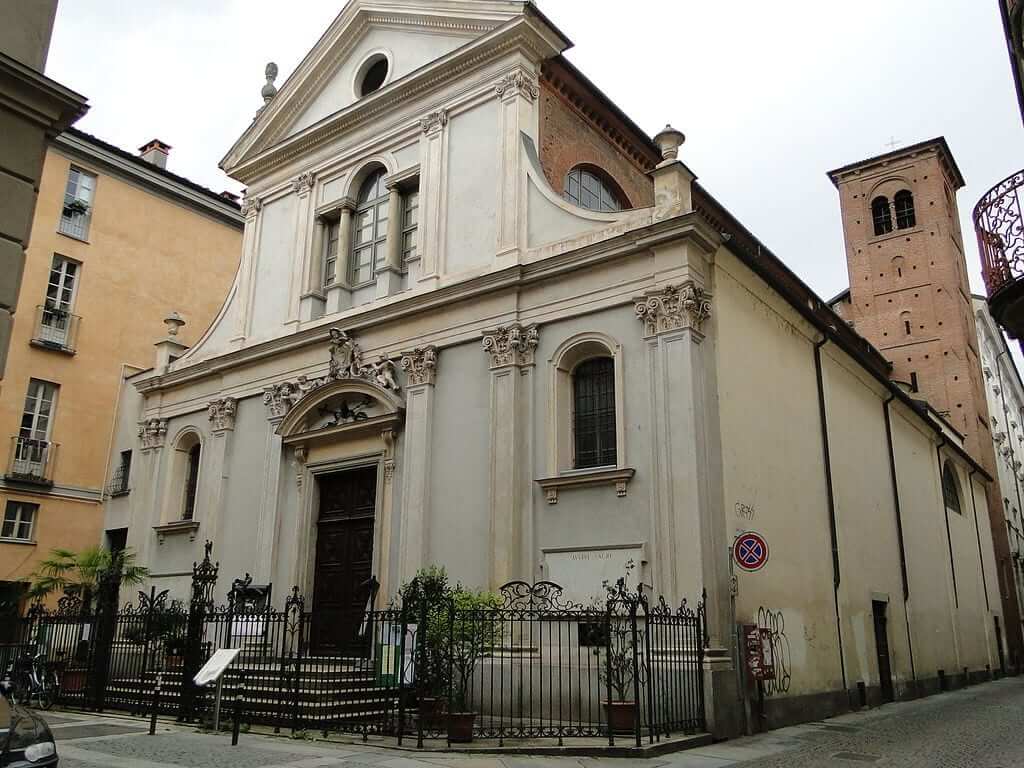
Basilica di Sant’Agostino
The Pantheon
Although the Pantheon was originally a pagan construction, it was turned into a Catholic church in the early 7th century and is still used as a church today.
Also known as “Basilica of St. Mary and the Martyrs,” it remains one of the best-preserved ancient buildings and best churches in Rome and its architecture is as unbelievable today as it must have been 14 centuries ago.
It’s dome is still the single largest, unreinforced concrete dome in the entire world, meaning this major tourist attraction has to make the list!
Read on for 6 Surprising Facts About the Pantheon in Rome or see the Pantheon in a whole new light during our Roman Icons tour, which pairs a fully guided Pantheon tour with skip-the-line access to Castel Sant’Angelo.
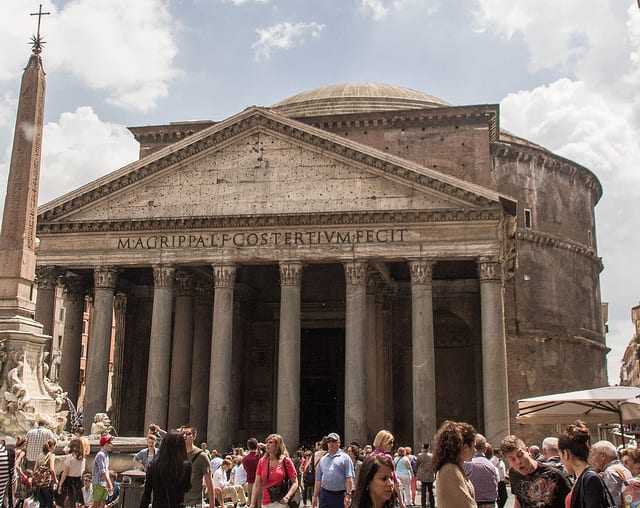
Pantheon
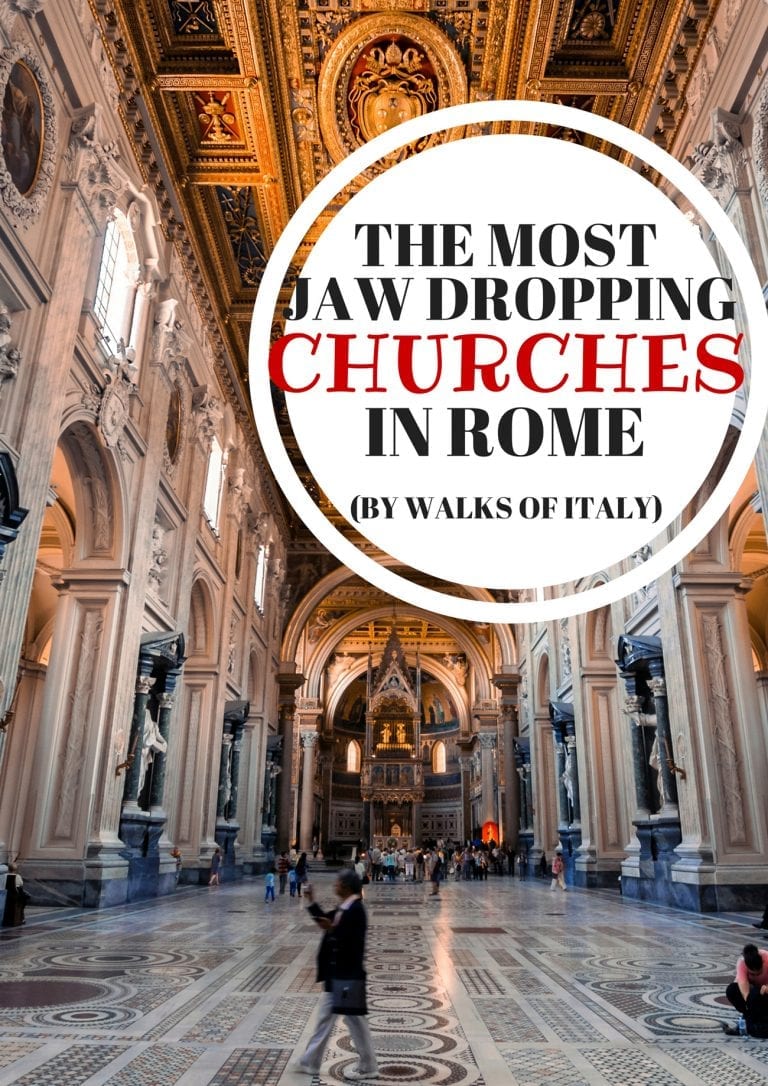
by Gina Mussio
View more by Gina ›Book a Tour

Pristine Sistine - The Chapel at its Best
€89
1794 reviews

Premium Colosseum Tour with Roman Forum Palatine Hill
€56
850 reviews

Pasta-Making Class: Cook, Dine Drink Wine with a Local Chef
€64
121 reviews

Crypts, Bones Catacombs: Underground Tour of Rome
€69
401 reviews

VIP Doge's Palace Secret Passages Tour
€79
18 reviews

Legendary Venice: St. Mark's Basilica, Terrace Doge's Palace
€69
286 reviews










